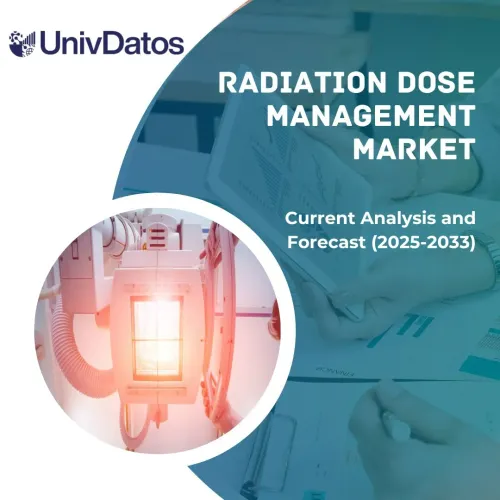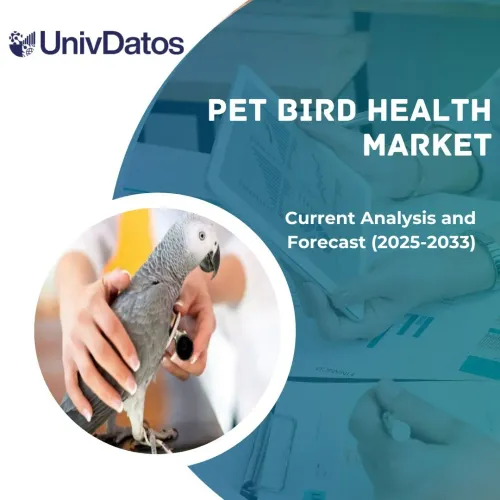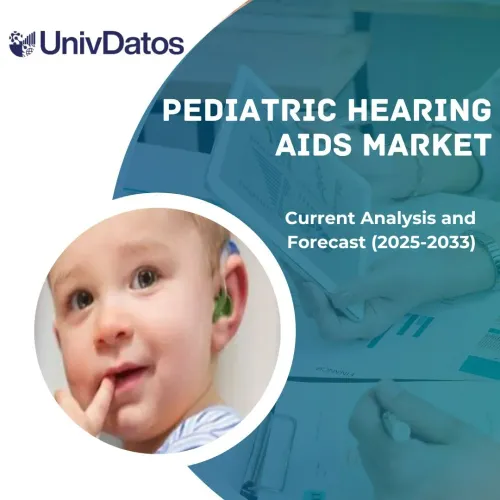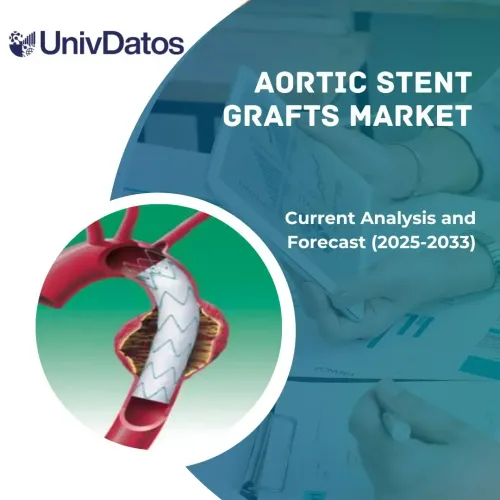- Startseite
- Über uns
- Industrie
- Dienstleistungen
- Lesen
- Kontaktieren Sie uns
Genotypisierungsmarkt: Aktuelle Analyse und Prognose (2021-2027)
Schwerpunkt auf Produkt/Dienstleistungen (Reagenzien & Kits, Genotypisierungsdienste, Instrumente und Bioinformatik); Technologie (PCR, Sequenzierung, Elektrophorese, Microarray und Andere); Endbenutzer (Pharma- & Biotechnologieunternehmen, Krankenhäuser und Kliniken, akademische & staatliche Institute, Diagnose- & Forschungseinrichtungen und Andere); Region/Land
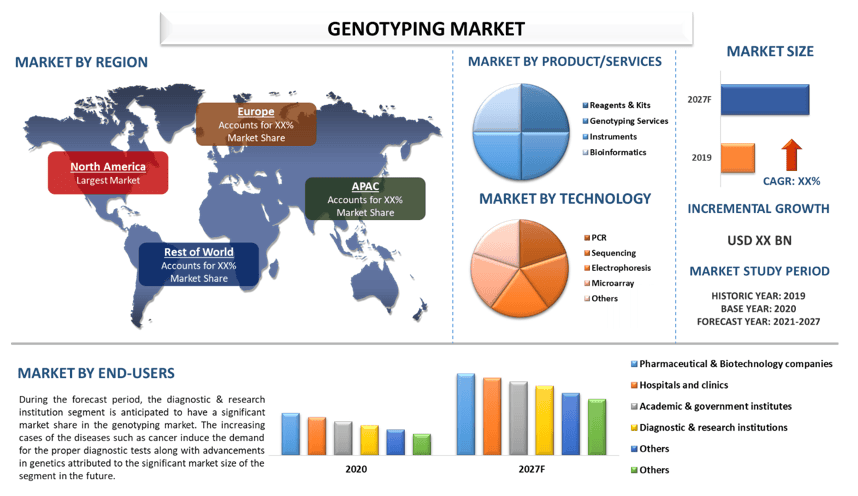
KOSTENLOSES MUSTER-PDF ANFORDERN
Der globale Genotypisierungsmarkt wird voraussichtlich mit einer erhöhten CAGR von rund 20 % über den Prognosezeitraum (2021-2027) wachsen.Genotypisierung ist der Prozess zur Bestimmung der DNA-Sequenz, genannt Genotyp, an spezifischen Positionen innerhalb des Genoms eines Individuums. Sequenzvariationen können als Marker in Linkage- und Assoziationsstudien verwendet werden, um Gene zu identifizieren, die für bestimmte Merkmale oder Krankheiten relevant sind.
Die Genotypisierung seltener Krankheiten hilft Ärzten, die Ursache unerkannter Störungen zu ermitteln, und hilft Familien, jahrelange Krankenhausbesuche und unnötige Tests zu vermeiden. Es wird erwartet, dass diese Faktoren den Markt ankurbeln. Darüber hinaus erhöht die zunehmende Prävalenz von Krankheiten wie Krebs zusammen mit den steigenden Inzidenzen seltener Krankheiten die Nachfrage nach Genotypisierungsdiagnostik.Nach Angaben des Ministeriums für Gesundheit und Wohlfahrt der Familie wird geschätzt, dass weltweit etwa 6000 bis 8000 seltene Krankheiten existieren, wobei in der medizinischen Literatur regelmäßig neue seltene Krankheiten gemeldet werden.Das zunehmende Interesse der globalen Akteure und der Institutionen zusammen mit dem kontinuierlichen Wachstum der Biotechnologieindustrie treibt auch den Markt für Genotypisierung an.So erreichte beispielsweise die Biotech-Industrie im Jahr 2020 laut Invest India eine Marktgröße von 70,2 Mrd. USD, was einem Anstieg von 12,3 % gegenüber dem Vorjahr entspricht. Die Bioökonomie verzeichnete in den letzten fünf Jahren einen Wertzuwachs von fast 95 %.
llumina Inc., Thermo Fisher Scientific Inc., Qiagen Inc., F. Hoffmann-La Roche Ltd., Fluidigm Corporation, Danaher Corporation, Agilent Technologies, Eurofins Scientific Inc., GE Healthcare Inc. und Bio-Rad Laboratories Inc. sind einige der prominenten Akteure, die auf dem Genotypisierungsmarkt tätig sind. Mehrere Fusionen und Übernahmen sowie Partnerschaften wurden von diesen Akteuren durchgeführt, um Kunden mit neuen Varianten von Genotypisierungsgeräten zu versorgen.
ANFRAGE ZUR INDIVIDUALISIERUNG
In der Studie dargestellte Erkenntnisse
„Unter den Produkten/Dienstleistungen hält das Segment Reagenzien & Kits den größten Anteil“
Basierend auf Produkten/Dienstleistungen ist der Markt in Reagenzien & Kits, Genotypisierungsdienste, Instrumente und Bioinformatik unterteilt. Das Segment Reagenzien & Kits verzeichnete im Jahr 2020 einen erheblichen Marktanteil, was hauptsächlich auf die steigenden Investitionen in Forschung und Entwicklung und die steigende Nachfrage nach Gentests zurückzuführen ist, was den Markt für die Genotypisierungsindustrie antreibt. Es wird jedoch erwartet, dass das Bioinformatik-Segment im Genotypisierungsmarkt ein lukratives Wachstum verzeichnen wird, was auf die steigende Nachfrage nach Software und den besseren Datenbanken zurückzuführen ist, die zur Speicherung der genetischen Informationen benötigt werden. Darüber hinaus treibt die Integration der Geräte mit dem Internet und dem öffentlichen Netzwerk auch das Segmentwachstum während des Prognosezeitraums an.
„Unter den Technologien wird erwartet, dass das Segment Sequenzierung den größten Anteil halten wird“
Basierend auf der Technologie ist der Markt in PCR, Sequenzierung, Elektrophorese, Microarray und andere unterteilt. Das PCR-Segment eroberte im Jahr 2020 einen erheblichen Marktanteil. Die kontinuierlich steigende Anzahl von Vorkommnissen genetischer Störungen und Todesfällen erhöht das Wachstum der PCR. Während der Prognose wird erwartet, dass das Sequenzierungssegment einen beträchtlichen Marktanteil haben wird. Dies ist hauptsächlich auf den technologischen Fortschritt in der Sequenzierungstechnologie und die häufigen Produkteinführungen der Unternehmen zurückzuführen.Beispielsweise startete Stanford im Januar 2021 die klinische Ganzgenomsequenzierung für erbliche kardiovaskuläre Tests.
„Unter den Endbenutzern wird erwartet, dass das Diagnose- und Forschungssegment den größten Anteil halten wird“
Basierend auf den Endbenutzern ist der Markt in Pharma- und Biotechnologieunternehmen, Krankenhäuser und Kliniken, akademische und staatliche Institute, Diagnose- und Forschungseinrichtungen und andere unterteilt. Die Pharma- und Biotechnologieunternehmen hielten im Jahr 2020 einen erheblichen Marktanteil. Die Genomik ermöglicht es Pharmaunternehmen, einen stärker personalisierten Ansatz bei der Arzneimittelentwicklung zu verfolgen, und es wird erwartet, dass dies zu sichereren und wirksameren Arzneimitteln führen wird. Es wird jedoch erwartet, dass das Segment der Diagnose- und Forschungseinrichtungen in Zukunft einen bedeutenden Anteil am Genotypisierungsmarkt haben wird. Dies ist hauptsächlich auf die weltweit steigenden Investitionen in Forschung und Entwicklung sowie auf eine steigende Anzahl von Fällen genetischer Störungen zurückzuführen.So haben sich beispielsweise die weltweiten Ausgaben für Forschung und Entwicklung laut UNESCO auf einen Rekordwert von fast 1,7 Billionen US-Dollar belaufen. Rund 10 Länder machen 80 % der Ausgaben aus.
„Nordamerika repräsentiert einen der größten Märkte für den Genotypisierungsmarkt“
Für ein besseres Verständnis der Marktdynamik des Genotypisierungsmarktes wurde eine detaillierte Analyse für verschiedene Regionen auf der ganzen Welt durchgeführt, darunter Nordamerika (USA, Kanada und der Rest Nordamerikas), Europa (Deutschland, Frankreich, Spanien, Vereinigtes Königreich, Italien und Rest von Europa), Asien-Pazifik (China, Indien, Australien, Japan und Rest von APAC). Im Jahr 2020 dominierte Nordamerika die Genotypisierungsindustrie. Dies kann hauptsächlich auf die Präsenz etablierter Marktteilnehmer und häufige Produkteinführungen sowie auf die Präsenz von staatlich finanzierten Organisationen in der Region zurückgeführt werden.Beispielsweise ist das National Human Genome Research Institute (NHGRI) ein Teil der National Institutes of Health (NIH), einer staatlichen Organisation, die von der US-Regierung unterstützt und finanziert wird und Aufzeichnungen über das menschliche Genom und die genetische Störung führt.
SPRECHEN SIE MIT DEM ANALYSTEN
Gründe für den Kauf dieses Berichts:
- Die Studie umfasst eine Marktabschätzungs- und Prognoseanalyse, die von authentifizierten wichtigsten Branchenexperten validiert wurde
- Der Bericht präsentiert einen schnellen Überblick über die gesamte Branchenleistung auf einen Blick
- Der Bericht enthält eine eingehende Analyse prominenter Branchenteilnehmer mit einem primären Fokus auf wichtige Geschäftsfinanzen, Produktportfolio, Expansionsstrategien und jüngste Entwicklungen
- Detaillierte Untersuchung der in der Branche vorherrschenden Treiber, Einschränkungen, wichtigsten Trends und Chancen
- Die Studie umfasst umfassend den Markt über verschiedene Segmente hinweg
- Detaillierte Analyse der regionalen Ebene der Branche
Anpassungsoptionen:
Der globale Genotypisierungsmarkt kann weiter an die Anforderungen oder andere Marktsegmente angepasst werden. Darüber hinaus weiß UMI, dass Sie möglicherweise Ihre eigenen Geschäftsanforderungen haben. Zögern Sie daher nicht, sich mit uns in Verbindung zu setzen, um einen Bericht zu erhalten, der Ihren Anforderungen vollständig entspricht.
Inhaltsverzeichnis
Forschungsmethodik für die globale Genotypisierungsmarktanalyse (2021-2027)
Die Analyse des historischen Marktes, die Schätzung des aktuellen Marktes und die Prognose des zukünftigen Marktes des globalen Genotypisierungsmarktes waren die drei Hauptschritte, die unternommen wurden, um die Akzeptanz der Genotypisierung in den wichtigsten Regionen weltweit zu erstellen und zu analysieren. Um die historischen Marktzahlen zu sammeln und die aktuelle Marktgröße zu schätzen, wurden umfassende Sekundärrecherchen durchgeführt. Zweitens wurden zahlreiche Ergebnisse und Annahmen berücksichtigt, um diese Erkenntnisse zu validieren. Darüber hinaus wurden auch umfassende Primärinterviews mit Branchenexperten entlang der Wertschöpfungskette des globalen Genotypisierungsmarktes geführt. Nach Annahme und Validierung der Marktzahlen durch Primärinterviews verwendeten wir einen Top-Down-/Bottom-Up-Ansatz, um die gesamte Marktgröße zu prognostizieren. Danach wurden Marktaufschlüsselungs- und Datentriangulationsmethoden angewendet, um die Marktgröße von Segmenten und Untersegmenten zu schätzen und zu analysieren, auf die sich die Branche bezieht. Die detaillierte Methodik wird im Folgenden erläutert:
Weitere Einzelheiten zur Forschungsmethodik anfordern
Analyse der historischen Marktgröße
Schritt 1: Detaillierte Studie von Sekundärquellen:
Es wurde eine detaillierte Sekundärstudie durchgeführt, um die historische Marktgröße der Genotypisierung durch interne Quellen des Unternehmens wie zu erhaltenJahresberichte & Finanzberichte, Leistungspräsentationen, Pressemitteilungen usw.und externe Quellen einschließlichJournale, Nachrichten & Artikel, staatliche Veröffentlichungen, Wettbewerbsveröffentlichungen, Branchenberichte, Datenbanken von Drittanbietern und andere glaubwürdige Veröffentlichungen.
Schritt 2: Marktsegmentierung:
Nachdem wir die historische Marktgröße des Genotypisierungsmarktes ermittelt hatten, führten wir eine detaillierte Sekundäranalyse durch, um historische Markteinblicke und -anteile für verschiedene Segmente und Untersegmente für wichtige Regionen zu sammeln. Zu den wichtigsten Segmenten, die in dem Bericht enthalten sind, gehören Produkt/Dienstleistung, Endbenutzer und Technologie. Um die gesamte Akzeptanz der Genotypisierung auf der ganzen Welt zu evaluieren, wurden weitere Analysen auf Länderebene durchgeführt.
Schritt 3: Faktorenanalyse:
Nachdem wir die historische Marktgröße verschiedener Segmente und Untersegmente ermittelt hatten, führten wir eine detaillierteFaktorenanalysezur Schätzung der aktuellen Marktgröße des Genotypisierung. Darüber hinaus führten wir eine Faktorenanalyse unter Verwendung abhängiger und unabhängiger Variablen wie der wachsenden Zahl von Menschen mit chronischen Krankheiten und der zunehmenden alternden Bevölkerung weltweit durch. Eine gründliche Analyse wurde für Angebots- und Nachfrageszenarien unter Berücksichtigung wichtiger Partnerschaften, Fusionen und Übernahmen, Geschäftserweiterungen und Produkteinführungen im Genotypisierungssektor weltweit durchgeführt.
ANFRAGE NACH KUNDENSPEZIFISCHER GESTALTUNG
Schätzung & Prognose der aktuellen Marktgröße
Aktuelle Marktgrößenbestimmung:Basierend auf umsetzbaren Erkenntnissen aus den obigen 3 Schritten gelangten wir zur aktuellen Marktgröße, den wichtigsten Akteuren auf dem Genotypisierungsmarkt und den Marktanteilen der Segmente. Alle erforderlichen prozentualen Anteile, Aufteilungen und Marktgliederungen wurden unter Verwendung des oben genannten sekundären Ansatzes ermittelt und durch primäre Interviews verifiziert.
Schätzung & Prognose:Für die Marktschätzung und -prognose wurden verschiedenen Faktoren, einschließlich Treibern und Trends, Einschränkungen und Chancen für die Stakeholder, Gewichte zugewiesen. Nach der Analyse dieser Faktoren wurden relevante Prognosetechniken, d. h. Top-Down-/Bottom-Up-Ansatz, angewendet, um die Marktprognose bis etwa 2027 für verschiedene Segmente und Untersegmente in den wichtigsten Märkten weltweit zu erstellen. Die zur Schätzung der Marktgröße angewandte Forschungsmethodik umfasst:
- Die Marktgröße der Branche in Bezug auf den Wert (US$) und die Adoptionsrate der Genotypisierung in den wichtigsten Märkten im Inland
- Alle prozentualen Anteile, Aufteilungen und Aufschlüsselungen der Marktsegmente und Untersegmente
- Wichtige Akteure auf dem Genotypisierungsmarkt in Bezug auf die angebotenen Produkte. Außerdem die Wachstumsstrategien, die diese Akteure anwenden, um in dem schnell wachsenden Markt zu konkurrieren
Validierung von Marktgröße und -anteil
Primärforschung:Detaillierte Interviews wurden mit den wichtigsten Meinungsführern (Key Opinion Leaders, KOLs), einschließlich Top-Level-Führungskräften (CXO/VPs, Vertriebsleiter, Marketingleiter, Betriebsleiter und Regionalleiter, Länderchef usw.) in wichtigen Regionen, durchgeführt. Die Ergebnisse der Primärforschung wurden dann zusammengefasst und eine statistische Analyse durchgeführt, um die aufgestellte Hypothese zu belegen. Die Ergebnisse der Primärforschung wurden mit den Sekundärbefunden konsolidiert, wodurch Informationen in umsetzbare Erkenntnisse umgewandelt wurden.
Aufteilung der primären Teilnehmer in verschiedenen Regionen
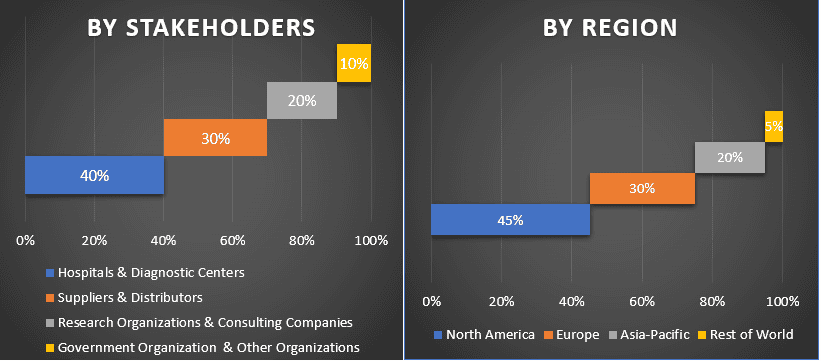
Markttechnik
Die Datentriangulationstechnik wurde eingesetzt, um die gesamte Marktschätzung abzuschließen und präzise statistische Zahlen für jedes Segment und Untersegment des Genotypisierungsmarktes zu erhalten. Die Daten wurden in mehrere Segmente und Untersegmente aufgeteilt, nachdem verschiedene Parameter und Trends in den Bereichen Produkt/Dienstleistung, Endbenutzer und Technologie des Genotypisierungsmarktes untersucht wurden.
Das Hauptziel der Genotypisierungsmarktstudie
Die aktuellen und zukünftigen Markttrends der Genotypisierung wurden in der Studie ermittelt. Investoren können strategische Erkenntnisse gewinnen, um ihre Entscheidungen für Investitionen auf der Grundlage der in der Studie durchgeführten qualitativen und quantitativen Analysen zu treffen. Aktuelle und zukünftige Markttrends bestimmten die Gesamtattraktivität des Marktes auf regionaler Ebene und boten den Industriebeteiligten eine Plattform, um den unerschlossenen Markt zu nutzen und als First-Mover-Vorteil zu profitieren. Weitere quantitative Ziele der Studien umfassen:
- Analysieren Sie die aktuelle und prognostizierte Marktgröße der Genotypisierung in Bezug auf den Wert (US$). Analysieren Sie auch die aktuelle und prognostizierte Marktgröße verschiedener Segmente und Untersegmente
- Zu den Segmenten der Studie gehören Bereiche von Produkten/Dienstleistungen und Technologie.
- Definition und Analyse des regulatorischen Rahmens für die Genotypisierungsindustrie
- Analyse der Wertschöpfungskette unter Einbeziehung verschiedener Intermediäre sowie Analyse des Kunden- und Wettbewerbsverhaltens der Branche
- Analysieren Sie die aktuelle und prognostizierte Marktgröße des Genotypisierungsmarktes für die Hauptregion
- Zu den in dem Bericht untersuchten Hauptregionen gehören Nordamerika, Europa, Asien-Pazifik und der Rest der Welt
- Unternehmensprofile des Genotypisierungsmarktes und die von den Marktteilnehmern angewandten Wachstumsstrategien, um sich in dem schnell wachsenden Markt zu behaupten
- Detaillierte regionale Analyse der Branche
Verwandt Berichte
Kunden, die diesen Artikel gekauft haben, kauften auch


